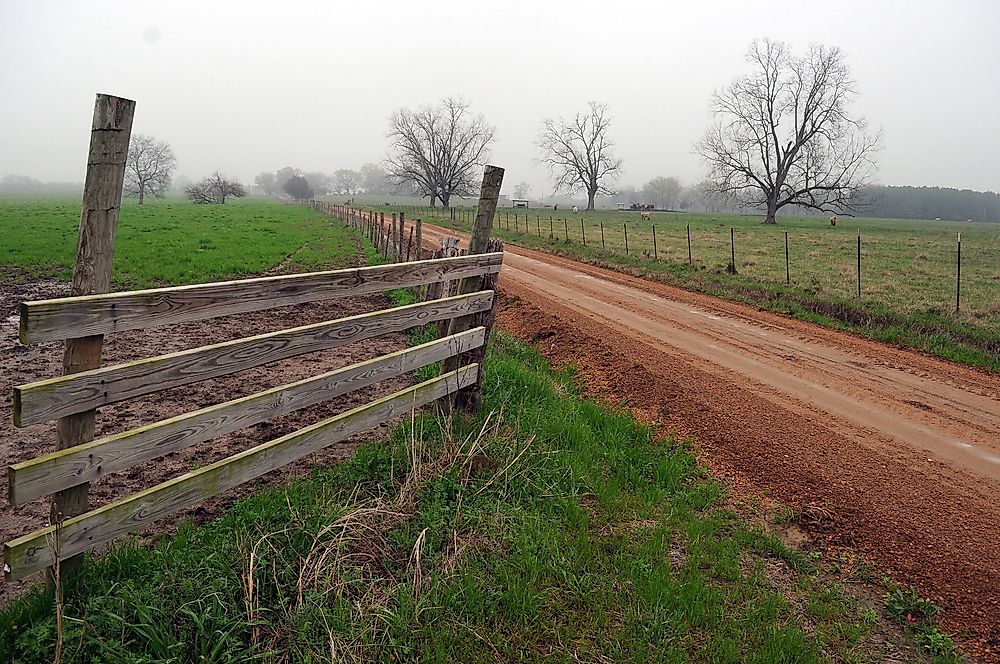Where is the Mississippi Embayment?

The Mississippi embayment is located in the south-central of the US. It forms part of the Mississippi alluvial plain. The embayment is wedge-shaped of over 95,000 sq ml in the Gulf Coastal Plains. It is an elongation of the fluvial sediments of the Mississippi towards the North. The embayment extends from southern Illinois southwards to parts of Alabama, Kentucky, Mississippi, Arkansas, Tennessee, Missouri, Louisiana, and Texas.
Geography of the Mississippi Embayment
The embayment is a low-lying basin which is full of Cretaceous sediment deposits from rivers. The Mississippi embayment is geologically a syncline that runs to the south with its axis parallel to those of Mississippi River. The sediment rocks that are found in the Mississippi embayment are of different ages, varying from between Jurassic to Quaternary. Notable physical features found on the Mississippi embayment include the Sabine and Monroe uplifts, the Jackson Dome, East Texas and Desha basins, and Arkansas and Pickens-Gilbertown fault zones. The physical features were formed during the sedimentation of the embayment and when the volcanic activities were taking place in the earth’s crust. They influence the continuous sedimentation of the basin.
Formation of the Mississippi Embayment
The Mississippi Embayment was formed by the breaking of what was a previous continuous mountain range. The original mountain ranges consisted of the modern Appalachian ranges that pass on a north to the south axis along the Atlantic Coast of the US and the Ouachita Ranges passes through the Mississippi River on an East to West Axis. To understand how the embayment was formed, it is first necessary to understand how a previous mountain range was formed into a basin. Approximately 3OO million years ago, the Appalachian- Ouachita Ranges was lifted up when the tectonic forces that carried North America met with the tectonic forces of the Africa and South America. Upon their meeting, they formed the Pangaea. Over 90 million years ago, North America underwent intense volcanic activities in the earth’s crust. The forces of the magma underground activity forced part of the Appalachian –Ouachita range to uplifted to a height of about 2-3 km to form an arch. The uplifted region underwent intense erosion as the North America’s volcanic activities declined. The crust under the embayment area was cooled, contracted then retreated to form a 2.6 km deep trough-like feature, which was later filled by the Gulf of Mexico. When the sea level reduced, Mississippi and several other rivers found their way through the embayment, slowly filling it with a lot of sediments.
Benefits of the Mississippi Embayment
The soils in the Mississippi Embayment are fertile and good for agriculture. The rich alluvial soils support growing of cotton, corn, soybeans, and rice. The soil is rich in nitrogen. The Mississippi River is used to irrigate the crops, supporting the agricultural activities and people living in the embayment. The soils in the embayment also support the growing of hardwood trees. Many minerals are also found in the Mississippi embayment. Most of the minerals were deposited underground during the formation of the embayment. Some of the minerals include coal, gold, and copper. 80% of the population that lives on the Mississippi embayment depends on the underground water from the Mississippi for livelihood.











